The Pure Water Occasional for April 7, 2014
In this early April Occasional, you'll hear about the demise of beautiful Lake Atitlan, Yosmite Slough, and the Kulluk oil rig accident. There is trash in the ocean, Thallium in North Carolina, and coal ash in the Saluda River. Stories about dead dolphins, toxic sludge, sinking buildings, and the intrusion of the sea upon cities. Find out if tea really makes you pee more, how a new bracelet can monitor water quality, how reverse osmosis works (as explained by Pure Water Annie), and how to get rid of cryptosporidium. And, as always, there is much, much more.
The Pure Water Occasional is a project of Pure Water Products and the Pure Water Gazette.
To read this issue on the Pure Water Gazette's website, please go here.
How climate change will affect where you live
by Michael Slezak
The latest report from the Intergovernmental Panel on Climate Change spells out how climate change will affect each part of the world, and what can be done about it. For many regions the IPCC only makes vague predictions, and in some cases the impacts are deeply uncertain.
Here is our rough guide to the main impacts this century, and some tips for coping with them. It is partly based on draft versions of the report's many chapters, the final text of which will be released within the next two days.
Europe: The south will fry
The Mediterranean looks to be the most threatened part of Europe, because the IPCC expects "multiple stresses and systemic failures due to climate change".
Energy demand will drop in the rest of Europe, but the increased need for cooling around the Mediterranean will drive up energy costs. Tourism, a key industry, will take a hit from 2050, when holidaymakers are expected to choose northern destinations. Forest fires and heatwaves will increase, crops and vineyards will become less productive, fishery production will decrease and rising seas pose a growing threat.
To adapt, people will need to use energy-efficient cooling technologies to reduce energy demands; insure their assets; plant more diverse crops; and build early warning systems and hard walls to defend against floods.
North America: Shifting water
Rain and storms will move northwards, flooding areas north of New York and leaving southern areas short of water. Mexicans will have to do everything they can to preserve water and escape the heat.
Adapting to water deficits is not too hard: the key is increased efficiency. But extra flooding is more problematic, with total costs expected to increase tenfold this century.
The US has the capacity to adapt, but is struggling with misinformation and a lack of political will. Nevertheless, New York is on the right path, raising infrastructure like boilers out of the way of expected floods and trying to capture flood water before it reaches sewers.
Asia: Too much water, too little water
Sea-level rise is the biggest problem facing Asia. Globally, the majority of the people directly affected will be in southern and eastern Asia.
But that is not the only problem. Water scarcity will affect most of Asia, and higher temperatures will lower rice yields in some areas by shortening the growing season. Food production in Russia is under particular threat, and the IPCC estimates that up to 139 million people could face food shortages at least once a decade by 2070.
Countries will need to manage water better: water-saving technologies in irrigation may help. Growing crops that cope with high temperatures can boost yields up to 15 per cent, offsetting much of the almost 20 per cent decline expected by 2100.
Australasia: Extreme unknowns
There is a lot of uncertainty about impacts in Australasia, but some things are clear.
More extreme rainfall and rising sea levels will increase the frequency of devastating floods like those that hit Queensland in 2011. People in some areas will have to move away.
Extreme heat will increase and threaten lives, particularly those of the sick and elderly, and also cause more wildfires.
The Great Barrier Reef will continue to degrade, with warmer and more acidic water bleaching more coral, and greater stress coming from factors like agricultural run-off.
Coping with all this requires early warning systems and response plans. But there is huge uncertainty about how rainfall patterns will change. It may be best to plan for the worst.
Africa: Struggling to cope
The big issue for Africa is food security. Crops and livestock will be affected by flooding, drought and shifts in the timing of rainfall and temperature, but where and how these impacts will be felt is uncertain. There will also be more soil erosion from storms, plus pest and disease outbreaks due to warmer temperatures.
Africa has little capacity to adapt. One of the most pressing problems is simply spreading the word about climate change so people can make informed decisions.
Central and South America: Changing norms
Northern Brazil may lose 22 per cent of its annual rainfall by 2100, while the region around Chile could get a 25 per cent increase.
The drying regions will face food shortages. In northern Brazil, that will affect some of the poorest people. Shrinking glaciers in the Andes also threaten water supplies for some people, and will increase tensions.
Climate change will also bring new diseases to many areas, including water-borne diseases like cholera.
The whole region is relatively poor so will struggle to adapt. The first step is to adapt to the current climate. That includes easing poverty and creating early warning systems for disease outbreaks and bad weather.
Small islands: Sinking and eroding
Unsurprisingly, sea-level rise is one of the biggest threats for small islands, including those in the tropics, the Mediterranean, off Africa, and in the Indian and Pacific oceans. Rising waters will swamp some areas, erode coasts and contaminate sources of fresh water.
Building sea walls can have mixed results. In Barbados, building them protected human assets but led to more erosion elsewhere on the coast. It is sometimes better to use "soft" measures like increasing coastal vegetation to reduce erosion.
If islands are near coral reefs, the inhabitants often rely on the reef ecosystems for their livelihood. Reefs are now threatened by warm seas andacidification. But reducing other pressures, like water pollution and destructive fishing, could help.
Article Source: New Scientist.
Pure Water Gazette Fair Use Statement
Guatemala’s treasured Lake Atitlán is dying
by Anna-Claire Bevan
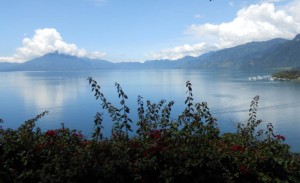
GUATEMALA CITY – Once described by Aldous Huxley as the Lake Como of Guatemala, Lake Atitlán is a justified staple on the Central American tourist trail. However, over the past few years, agrochemicals, raw sewage, litter and shore development have taken their toll, turning the fresh blue water a murky shade of brown, turning tourists away.
This week a joint initiative by the Italian and Guatemalan governments called “Yo soy Atitlán” aims to raise the profile of Lake Atitlán’s problems and work with environmental organizations, experts and the surrounding communities to combat the contamination that threatens to destroy one of the world’s most picturesque places.
What was considered to be a local problem has drawn international concern as a team of Italian experts arrived in Guatemala earlier this week, keen to share their knowledge of how their own country rescued its lakes in the 1980s.
The Italian Embassy in Guatemala said that in “Italy, too, we have lived through contamination.”
According to a study by Del Valle University in Guatemala, over the past 45 years the pollution of Lake Atitlán, located 120 kilometers west of the capital, has contributed to a reduction in the transparency of the water, from 11 meters to 5.5 meters, and a decrease in the concentration of oxygen in the water from 7mg/liter to 0.3.
According to Margaret Dix, a biology professor at Del Valle University, pollution of the lake has led to a reduction in tourism, jobs, fish and food, and an increase in poverty and illnesses for the surrounding communities, for whom the lake represents a primary source of water.
“Every year one million cubic meters of untreated raw sewage enters the lake; 109,500 metric tons of litter – 3 pounds of solid waste per person, per day – and 110,000 metric tons of soil is lost due to erosion,” Dix said.
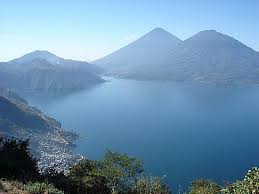
“To improve the ecological conditions of the lake, territorial planning is needed with an integrated management of solid and liquid waste to prevent the entry of raw sewage and to reduce the accumulation of phosphorous and nitrogen.
“Experiences in other parts of the world show that generally for lakes similar to Atitlán, traditional treatment plants are inadequate and have a prohibitively high operational cost. The solution is to export raw sewage to another basin where it can be treated to eliminate pathogens and the water can be used in agriculture. Many experts consider this to be the best option,” Dix said.
Various activities have been organized as part of the two-week campaign launch, such as an Italian rock concert in Guatemala City, which was opened by a Mayan cultural group and attended by approximately 1,000 people. Proceeds were donated to the Yo soy Atitlán program.
A forum for experts – from environmental ministers to conservationists – also was held to discuss possible solutions to eliminate the contamination, and a project called “Lancha Azul” will kick off next week to encourage dialogue among the surrounding lake communities and to teach them about solid-waste management.
Yo soy Atitlán hopes to encourage as many people as possible from the government and nongovernmental organizations, as well as environmental experts, communities around the lake and academic institutions to get involved and debate the challenges and goals for Lake Atitlán over the coming years.
The Guatemalan government already has agreed to allocate more funds to increase garbage collections in the area, purify water and improve waste management systems.
Said Dix: “The future is in our hands. There’s still time to stop the degradation process of Lake Atitlán.”
Source: Tico Times.
Pure Water Gazette Fair Use Statement
Current Water News
Hazardous Yosemite Slough in San Francisco finally getting cleaned up. After years of cleaning up surrounding areas, federal regulators say they will tackle the extensive lead and PCB contamination in Yosemite Slough, the intertidal channel between Candlestick Point and the Hunters Point Shipyard.
Potential coal ash threat to Saluda River surfaces. Duke Energy has found three drainage pipes running beneath a closed Upstate coal ash pond, a discovery that is drawing comparisons with a site in North Carolina where a massive spill blackened a river two months ago.
Thallium found near Duke Energy's coal ash pond. North Carolina state regulators found thallium in surface water near one of Duke Energy's coal ash ponds last month - specifically at the Cliffside Steam Station on the Cleveland-Rutherford County line.
Plane search shows world's oceans are full of trash. Before Malaysia Airlines Flight 370 went missing, sea trash was not a global headliner. But as hundreds of objects sighted as possible aircraft debris turn out to be trash, a new narrative is emerging in the hunt for the missing plane: There's more garbage out there than you think.
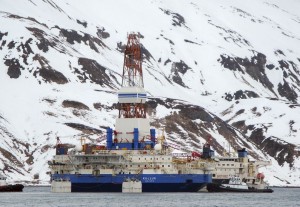
Coast Guard blames Shell risk-taking in Kulluk rig accident. The Coast Guard concluded that Shell made an ill-advised decision to tow its drill rig away from Alaska, a 1,700-nautical-mile journey across the northern Gulf of Alaska in the final days of December 2012, in part to avoid millions of dollars in tax liability.
29 dead dolphins found since oil spill. Scientists are trying to determine whether an oil spill two weeks ago in Galveston Bay contributed to a higher-than-normal number of dolphin deaths..
US chemical safety bill passes Senate committee. Although it’s only the first step in a long road on Capitol Hill, Senator Joe Manchin’s Chemical Safety and Drinking Water Protection Act was passed unanimously by the Senate Committee on Environment and Public Works Thursday.
Toxic sludge cleanup costly to taxpayers. Cancer-causing chemicals have been illegally dumped in Charlotte for the third time, officials said. There are new concerns that someone started pumping PCBs into the city's water system months before it was first discovered.
Reused water becomes hot topic in shale fields. Water - and how it's sourced - has been an increasingly hot topic in the oil patch. Drilling a well in the Eagle Ford Shale and other so-called "tight" formations requires several million gallons of water.

Milwaukee sinks as ebbing groundwater undermines its foundations. Milwaukee is sinking. The walls and foundations of dozens of downtown buildings that stayed structurally afloat for more than 100 years on wooden pilings are deteriorating as once-sturdy Wisconsin pines, oaks and cedars rot. The culprit is declining groundwater that preserved the supports.
The city and the sea. Given the huge number of people who live on the world’s coasts, how will human populations adapt to an increasingly aquatic world? Do we stand strong, and demonstrate our clever technical ingenuity with floodgates and waterproof buildings? Or do we humbly bid a hasty retreat, scrambling for higher ground? It seems increasingly clear that there may be a third way.
Government to introduce public alert system following alarm over sea sewage levels. A public alert system will be implemented when pollution from Hamilton’s Seabright sewage outfall is detected in bathing waters around nearby south shore beaches, Environment Minister Trevor Moniz announced today.
Growth tests San Antonio’s conservation culture. Even with accolades from federal officials and a featured role in a public television documentary, San Antonio is grappling with explosive growth and dwindling water resources, like the rest of Texas.
How climate change will affect where you live. The latest report from the Intergovernmental Panel on Climate Change spells out how climate change will affect each part of the world, and what can be done about it. For many regions the IPCC only makes vague predictions, and in some cases the impacts are deeply uncertain
New silicone bracelets have a porous surface that mimics a cell, absorbing chemicals that people are exposed to through their environment. They can detect water pollution. Will we someday wear bracelets to warn us of chemical danger?
An Indianapolis family had a $4,000 water bill because of an undetected leak.
“Shallow Water Blackout” May Be the Cause of the Death of a Young Water Polo Player.
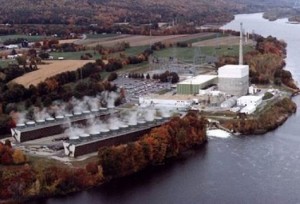
Ever wonder why nuclear power plants are built on the shores of lakes and rivers? Well, it isn't so workers can enjoy the scenery. It's because nuclear plants are great water gluttons.
Nuclear plants use water to create steam that powers the turbines that create electricity and they require great quantities of water to remove and dump the excess heat created by the reactor core.
The excess heat that is returned to the water source in the form of water that is much hotter than the ambient water is a significant polluter of the local environment.
More details: Got Water? by the Union of Concerned Scientists.
New on the Pure Water Gazette's website:
Are Use-More-Pay-Less Water Rates a Thing of the Past? One town's approach to controlling water use by rate adjustment.
Can Our Bodies Use the Water from Coffee and Tea? Do caffeinated drinks really dehydrate us?
Sebago water receives ultraviolet treatment
by Ezra Silk
In response to Environmental Protection Agency regulations, the Portland [OR] Water District is treating the water that it supplies to the Greater Portland area for cryptosporidium, a microscopic parasite that typically derives from animal waste and can cause severe gastrointestinal illness.
Beating a federally imposed deadline of April 1, the district has been operating two 14-foot, 84-lamp ultraviolet units for the past several months. The devices sterilize any cryptosporidium pathogens that may pass through, according to Joel Anderson, the chief operator of the Sebago Lake Water Treatment Facility.
“When UV attacks (pathogen) DNA, it actually breaks those cells and short-circuits them, and then renders them incapable of replicating,” said Anderson. “One cell in your system is not going to make you sick. When it gets into your system and begins to multiply is when you run into problems.”
According to Anderson, the district completed two years of monthly testing and never detected any cryptosporidium organisms in the water.
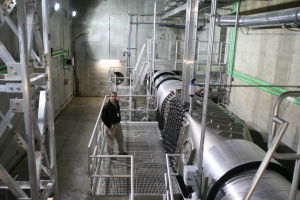
Joel Anderson, chief operator of the Sebago Lake Water Treatment Facility, said that one of the benefits of a new UV treatment system is that it does not add any new chemicals to the water supply. The average 21.5 million gallons of water that travel through the water treatment facility every day are treated with zinc orthophosphate, sodium hydroxide, sodium hypochlorite, aqua ammonia and hydroflourosilicic acid.
“The good news is Portland Water District is of very low susceptibility to it,” Anderson said. “We don’t have a lot of farmland in our watershed. We have a natural filtration system that takes place at Sebago Lake.”
In 1993, a cryptosporidium outbreak in Milwaukee’s drinking water supply system made 400,000 people ill, and killed more than 100 people. In response, the Environmental Protection Agency began to draft the Long Term 2 Enhanced Surface Water Treatment Rule, which was adopted in 2006. The rule requires public water systems that use surface water to treat for cryptosporidium.
The average 21.5 million gallons of water that travel through the water treatment facility every day are treated with zinc orthophosphate, sodium hydroxide, sodium hypochlorite, aqua ammonia and hydroflourosilicic acid. Anderson said that one of the benefits of the UV treatment is that it does not add any other chemicals to the water supply.
“One of the reasons the Portland Water District chose to go with UV as opposed to a chemical process is because there are no known disinfection byproducts,” Anderson said. “It’s a physical process. People should not notice any taste. They should not notice any odor. It subjects it to a light. It’s a quick process.”
The facility’s ozone disinfection system, which kills viruses and giardia parasites, was also updated during the 17-month, $12 million project. The district received a $300,000 grant from Efficiency Maine to complete the project, and expects to save $150,000 on annual electric costs as a result of the upgrades. The program was primarily funded through the state Department of Health and Human Services’ Drinking Water State Revolving Fund.
According to the Centers for Disease Control, cryptosporidium can lead to stomach pain, dehydration, nausea, vomiting, fever and weight loss. It generally affects the small intestine, and can cause people with weak immune systems to succumb to chronic or fatal illnesses. Symptoms tend to set in two to 10 days after infection.
Michelle Clements, the water district’s spokeswoman, said that the improvements provide an additional safeguard to protect the quality of Greater Portland’s water supply.
“The project has added an additional barrier to potential contamination for our customers,” she said. “It’s just another way we provide safe, clean drinking water to our customers.”
Source: Lakes Region Weekly.
How Undersink Reverse Osmosis Works
by Pure Water Annie
![pwanniemedium[1]](https://ymlp.com/https.php?id=www.purewatergazette.net/blog/wp-content/uploads/2012/05/pwanniemedium1.jpg)
It's a Lot Simpler Than You Think
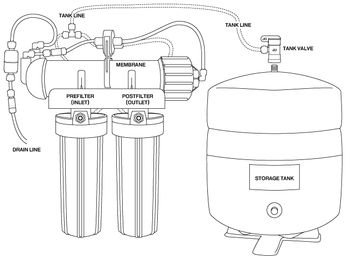
The drawing above is a standard 3-stage Pure Water Products Black and White undersink reverse osmosis unit. "Three stage" means that it has three main treatment devices--in this case, two carbon block filters and a reverse osmosis membrane. Four stage units usually add a sediment prefilter.
Here's a step-by-step rundown of how it operates.
1. Pretreatment. Tap water taken from the cold water undersink faucet pipe enters the Prefilter (Inlet) port through the quick connect fitting just below the Prefilter (Inlet) label. The vertical prefilter canister contains a high quality carbon block filter which removes chlorine/chloramine and other miscellaneous chemicals. The filter protects the reverse osmosis membrane from disinfectants.
2. Shut-off system. Treated water exits the back of the prefilter canister via a 1/4" tube which loops its way to the top of the unit where it enters the Auto Shutoff valve. The Shutoff Valve is the round device clipped to the top of the horizontal membrane housing. In the Shutoff valve the water makes a horseshoe turn and exits through the 1/4" tube that takes it to the right end of the Membrane housing. [More of the shutoff system and what it does later.]
3. The Membrane. The reverse osmosis membrane is contained in the horizontal housing labeled Membrane. Its function is to screen out hard-to- remove contaminants like fluoride, lead, arsenic, chromium, nitrates and others as well as make a 90% plus reduction in the "dissolved solids" like sodium in the water. The membrane separates the water it treats into two streams--the product water (permeate) and the drain water (brine).
4. The Drain Water. The stream of drain water, called the brine or concentrate, contains the concentrated minerals and metals that are rejected. The reject water goes out the "drain line" at the extreme left of the unit. The drain line connects to a special clamp called a drain saddle that is installed on the undersink drain. The two cigar-shaped items in the drain line are a flow restrictor (above) and a check valve. The flow restrictor controls how much water flows to drain. It limits the drain flow to a tiny stream that is sized to suit the drain flow needs of the membrane. The other device, the check-valve, is a one-way valve. It allows water to flow toward the drain pipe but prevents it from flowing backward toward the RO membrane. Its function is to prevent backflow into the RO unit in the event of a blocked drain pipe. [Note: Most RO units do not have a drain line check valve and the flow restrictor is a much smaller part that is built into the fitting that connects the drain line to the membrane housing. Also, an air gap faucet can be used instead of the drain line check valve.]
5. The Product Water. The product water, the water you're going to drink, is often called "permeate." It leaves the left end of the membrane housing via the tube next to the drain line, passes through a check valve, and enters the left side of the Auto Shutoff valve. The function of the check valve is to keep back pressure from the unit's storage tank from pushing water backward into the membrane canister. This small check valve is essential for proper operation of the unit. [Instead of the external check valve in the picture, most RO makers use a tiny check valve that installs into the fitting at the point where the product water leaves the membrane canister.]
6. The Shut-off system revisited. As described above, the filtered tap water passes through the right side of the shutoff valve on its way to the membrane. On the other side of the shutoff valve, the permeate (product) water makes a horseshoe pass through the left side of the shutoff valve on its way to the Tank Line tee.
7. The Tank Tee. The tank tee serves as a fork in the road. Water takes the path of least resistance, and when it comes to the tank tee it goes to the pressure tank or to the inlet in back of the post filter, whichever offers less back pressure. The tube that joins the tee and the storage tank serves as both entry to the tank and exit from it. Depending on where pressure is greatest, water flows into the storage tank or back toward the tank tee.
8. The Storage Tank. A storage tank is needed because the reverse osmosis membrane processes water slowly, at the rate of a fast drip or a tiny stream. The tank is pressurized with a light air charge. Water is collected in a flexible bladder inside the storage tank and is pushed out by air pressure when there is a demand for water.
9. The Post Filter. The final filter is connected to the dispensing spigot on the sink top with a single 1/4" tube that plugs into the the Post Filter (Outlet) fitting. The Post Filter is a high quality carbon block filter that removes any remaining chemical traces and polishes the taste when water passes through it on its way to the spigot.
10. The Delivery and Shut-Off System. When the spigot on the sink is closed and the unit is making water, the product water has no place to go but into the storage tank. As the tank fills, it exerts increasing back pressure on the left side of the shutoff valve. When pressure in the tank reaches about 2/3 the incoming water pressure on the right side of the shutoff valve, the mounting pressure closes a piston inside the shutoff valve that stops water from entering the membrane. The unit remains off until a demand for water (opening the spigot) releases pressure on the left side of the shutoff valve. When the spigot is open, water leaves the tank, goes through the tank tee, through the post filter, and out the spigot. When the spigot is closed, the unit slowly refills the tank until back pressure from the tank again shuts off water to the membrane.
This article first appeared in the Pure Water Occasional for July 2012.
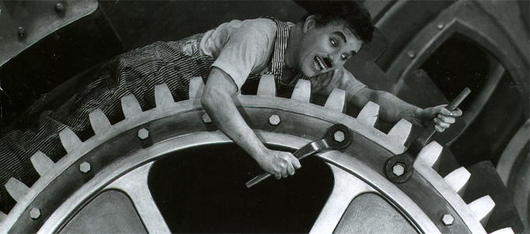
Please visit our RO Parts Page for tanks and accessories.
![]()
![]()

![occasionalbanner300[1]](https://ymlp.com/https.php?id=purewatergazette.net/blog/wp-content/uploads/2013/04/occasionalbanner3001.gif)
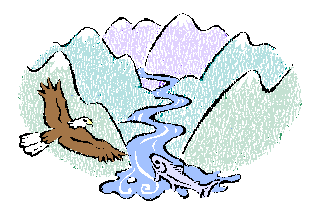





![pwanniemedium[1]](https://ymlp.com/https.php?id=www.purewatergazette.net/blog/wp-content/uploads/2012/05/pwanniemedium1.jpg)

